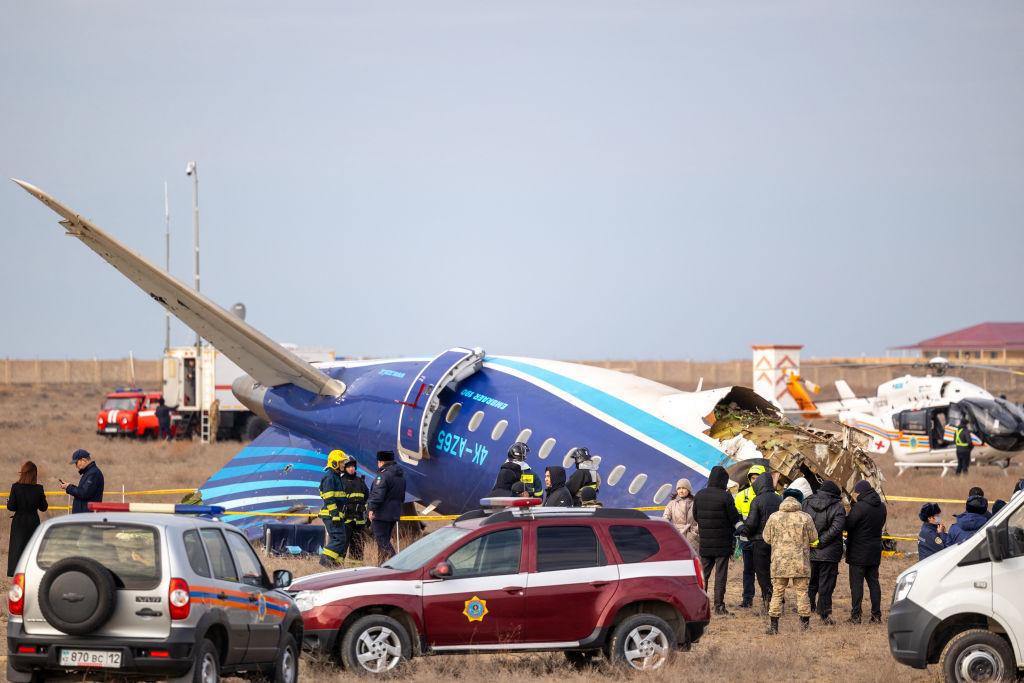- Sep 16, 2012
- 67,158
- 63,020
- 3,605
At this point, after the lies of MH-17, I would be very sus of any narrative by both sides TBH.

 en.wikipedia.org
en.wikipedia.org
". . . On the basis of the JIT's conclusions, the governments of the Netherlands and Australia held Russia responsible for the deployment of the Buk installation and began pursuing legal remedies in May 2018.[17][18] The Russian government denied involvement in the shooting down of the aircraft,[13][19][20]"
ROBERT PARRY: Vindicated on MH-17 Reporting
CN Founder Robert Parry’s reporting on the MH-17 air disaster was vindicated when the World Court last week refused to blame Russia for shooting down the Malaysian airliner over Ukraine in 2014.

". . . In a Dutch report released last October, the Netherlands’ Military Intelligence and Security Service (MIVD) reported that the only anti-aircraft weapons in eastern Ukraine capable of bringing down MH-17 at 33,000 feet belonged to the Ukrainian government.
MIVD made that assessment in the context of explaining why commercial aircraft continued to fly over the eastern Ukrainian battle zone in summer 2014. MIVD said that based on “state secret” information, it was known that Ukraine possessed some older but “powerful anti-aircraft systems” and “a number of these systems were located in the eastern part of the country.”
The intelligence agency added that the rebels lacked that capability: “Prior to the crash, the MIVD knew that, in addition to light aircraft artillery, the Separatists also possessed short-range portable air defence systems (man-portable air-defence systems; MANPADS) and that they possibly possessed short-range vehicle-borne air-defence systems. Both types of systems are considered surface-to-air missiles (SAMs). Due to their limited range they do not constitute a danger to civil aviation at cruising altitude.”
One could infer a similar finding by reading a U.S. “Government Assessment” released by the Director of National Intelligence on July 22, 2014, five days after the crash, seeking to cast suspicion on the ethnic Russian rebels and Putin by noting military equipment that Moscow had provided the rebels. But most tellingly the list did not include Buk anti-aircraft missiles. In other words, in the context of trying to blame the rebels and Putin, U.S. intelligence could not put an operational Buk system in the rebels’ hands.
So, perhaps the most logical suspicion would be that the Ukrainian military, then engaged in an offensive in the east and fearing a possible Russian invasion, moved its Buk missile systems up to the front and an undisciplined crew fired a missile at a suspected Russian aircraft, bringing down MH-17 by accident.
That was essentially what I was told by a source who had been briefed by U.S. intelligence analysts in July and August 2014. [See, for instance, Consortiumnews.com’s “Flight 17 Shoot-Down Scenario Shifts” and “The Danger of an MH-17 Cold Case.”]
Malaysia Airlines Flight 17

Malaysia Airlines Flight 17 - Wikipedia
". . . On the basis of the JIT's conclusions, the governments of the Netherlands and Australia held Russia responsible for the deployment of the Buk installation and began pursuing legal remedies in May 2018.[17][18] The Russian government denied involvement in the shooting down of the aircraft,[13][19][20]"
ROBERT PARRY: Vindicated on MH-17 Reporting
February 7, 2024ROBERT PARRY: Vindicated on MH-17 Reporting
CN Founder Robert Parry’s reporting on the MH-17 air disaster was vindicated when the World Court last week refused to blame Russia for shooting down the Malaysian airliner over Ukraine in 2014.
". . . In a Dutch report released last October, the Netherlands’ Military Intelligence and Security Service (MIVD) reported that the only anti-aircraft weapons in eastern Ukraine capable of bringing down MH-17 at 33,000 feet belonged to the Ukrainian government.
MIVD made that assessment in the context of explaining why commercial aircraft continued to fly over the eastern Ukrainian battle zone in summer 2014. MIVD said that based on “state secret” information, it was known that Ukraine possessed some older but “powerful anti-aircraft systems” and “a number of these systems were located in the eastern part of the country.”
The intelligence agency added that the rebels lacked that capability: “Prior to the crash, the MIVD knew that, in addition to light aircraft artillery, the Separatists also possessed short-range portable air defence systems (man-portable air-defence systems; MANPADS) and that they possibly possessed short-range vehicle-borne air-defence systems. Both types of systems are considered surface-to-air missiles (SAMs). Due to their limited range they do not constitute a danger to civil aviation at cruising altitude.”
One could infer a similar finding by reading a U.S. “Government Assessment” released by the Director of National Intelligence on July 22, 2014, five days after the crash, seeking to cast suspicion on the ethnic Russian rebels and Putin by noting military equipment that Moscow had provided the rebels. But most tellingly the list did not include Buk anti-aircraft missiles. In other words, in the context of trying to blame the rebels and Putin, U.S. intelligence could not put an operational Buk system in the rebels’ hands.
So, perhaps the most logical suspicion would be that the Ukrainian military, then engaged in an offensive in the east and fearing a possible Russian invasion, moved its Buk missile systems up to the front and an undisciplined crew fired a missile at a suspected Russian aircraft, bringing down MH-17 by accident.
That was essentially what I was told by a source who had been briefed by U.S. intelligence analysts in July and August 2014. [See, for instance, Consortiumnews.com’s “Flight 17 Shoot-Down Scenario Shifts” and “The Danger of an MH-17 Cold Case.”]




